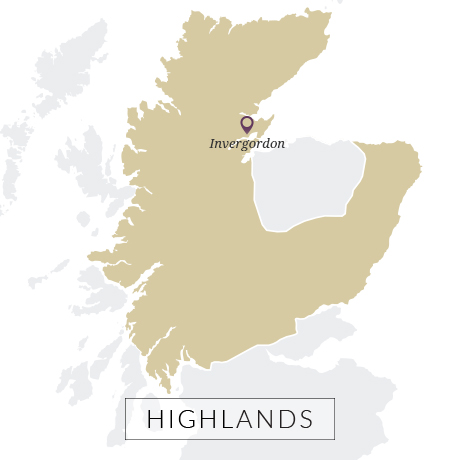Dalmore
Whyte & Mackay's Highlands distillery.


Grain distilling has long been a specialty of central Scotland. Distillers there had access to a wider selection of grains, meaning there was a different character from the earliest days. A larger market on their doorstep meant that bigger distilleries were built, while the development of trade with England – mainly for spirit to be rectified into gin – resulted in the adoption of new distillation technology, most significantly continuous stills.
With most blending houses, bottling facilities, and distribution networks also based close to the central belt, it seemed unnecessary to build a grain plant elsewhere. Discovering one in the far north-east of Scotland therefore comes as a bit of a surprise.

Grain distilling has long been a specialty of central Scotland. Distillers there had access to a wider selection of grains, meaning there was a different character from the earliest days. A larger market on their doorstep meant that bigger distilleries were built, while the development of trade with England – mainly for spirit to be rectified into gin – resulted in the adoption of new distillation technology, most significantly continuous stills. With most blending houses, bottling facilities, and distribution networks also based close to the central belt, it seemed unnecessary to build a grain plant elsewhere.
Discovering one in the far north-east of Scotland therefore comes as a bit of a surprise. The town of Invergordon however specialises in confounding people’s expectations of what the Highlands are about.
It was established as an ‘improved’ town by local landowner William Gordon at the start of the 18th century when the surrounding land was drained and turned over to the cultivation of arable crops. By the end of the century it was already being flagged up as an ideal situation for “a manufacturing village”. Part of its attraction was its deep water port which allowed rapid (at that time) links to the south.
It was used as a naval base from WWI, but when the Navy pulled out in 1956 the search was on to find gainful employment for the locals who had been made redundant. This also coincided with a wider series of incentives to establish industries in the Highlands; in time Invergordon has also been home to an aluminium smelter, while it is situated close to the oil rig repair yard at Nigg Bay.
The locality was already home to many malt distilleries – it sits between Dalmore and Glenmorangie – and the combination of ready access to cereal crops and its port made it an ideal site for a grain distillery. The timing was also perfect as this was also the start of the great North American Scotch boom.
In 1959, Invergordon Distillers was founded and the distillery started operations in 1961. Four years later the Ben Wyvis single malt distillery started up. This closed in 1977 (the Ben Wyvis stills are now at Glengyle, itself set up by industry legend Frank McHardy who started his career at Invergordon).
Invergordon Distillers went though a series of owners before being absorbed into Whyte & Mackay in 1993. A 10-year-old single grain, The Invergordon, was launched in 1990 and was targeted specifically at the female market. Though well-regarded it was withdrawn a few years later.